The Latest Trends in UAS Policy in the United States, Edition 2022
– Initiatives to ensure safety in beyond visual line-of-sight operations and to share airspace with traditional aircrafts -
- Colloquium
- Aviation and Airport
The 152nd Transport Policy Colloquium Washington Report XVI
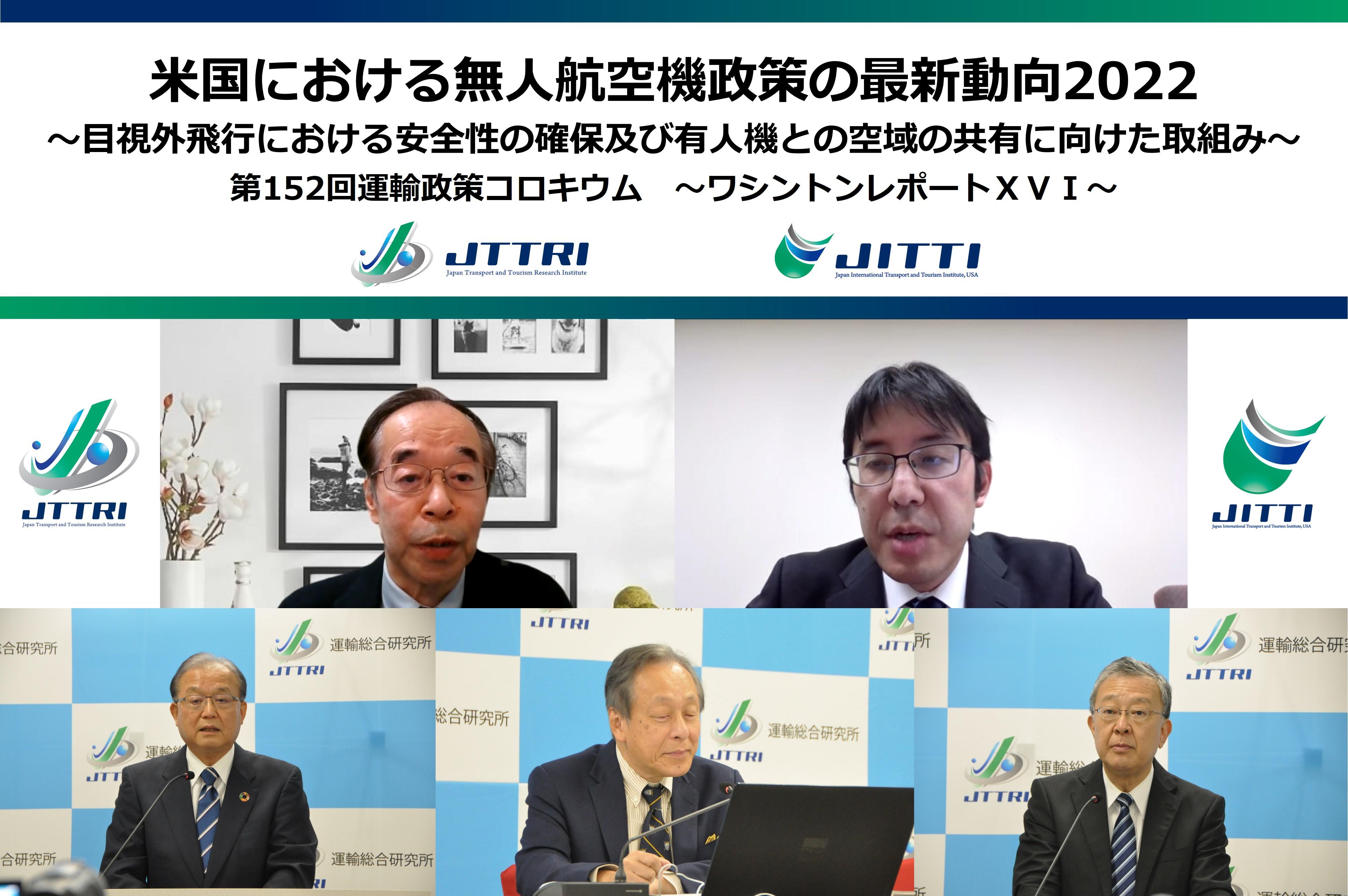

| Date / Time | Tue, Oct 11,2022 |
|---|---|
| Theme | Lecturer:FUJIMAKI Yoshihiro Senior Research Fellow,Japan International Transport and Tourism Institute, USA (JITTI USA) Commentator:SUZUKI Shinji Project Professor,Institute for Future Initiatives,the University of Tokyo <Discussion> Coordinator:YAMAUCHI Hirotaka President for Research,Japan Transport and Tourism Research Institute (JTTRI) |
Event Summary
In the U.S., revisions to the regulations are underway to allow the operation of small UAS without individual procedures to evaluate the safety of each flight, as long as the UAS meets certain performance standards. At the 143rd Transport Policy Colloquium on September 21, 2021, the latest developments in UAS policy in the U.S. at the time, including revisions to the regulations regarding night operations and operations over people (flights over persons other than the pilot and assistants), was reported. In addition, Yoshihiro Fujimaki, Senior Research Fellow at the Japan International Transport and Tourism Institute, USA, reported that an expert committee had been established to revise the regulations for BVLOS operations.At this 152nd Transport Policy Colloquium following on from the 143rd, Senior Research Fellow Fujimaki gave a briefing on a report released in March 2022 by the expert committee on BVLOS operations (i.e., flight at distances further than the range where the aircraft can be monitored visually). He reported that, as a result of the study by this expert committee, it was decided to revise the regulations to create a general rule for BVLOS operations by eliminating the individual procedures for evaluating the safety of each individual flight if certain performance criteria are met. In addition, as BVLOS operations become more common in the future, a decision was made to lift the ban on a pilot operating more than one UAS, which is currently prohibited. The committee also decided on a policy to revise the regulations regarding the handling of so-called “airspace sharing,” where UAS fly in the same airspace as manned aircraft (such as helicopters), cases of which will inevitably increase with the growth of BVLOS operations.
Then, Shinji Suzuki , Professor Emeritus of the University of Tokyo and Project Professor of the University of Tokyo’s Institute for Future Initiatives, who served as a commentator, presented the basic principles underlying the safety assurance systems for UAS in various countries and the details of the R&D projects being conducted in Japan in preparation for the expansion of BVLOS operations in the country.
A question-and-answer session followed, coordinated by Hirotaka Yamauchi, President for Research.
Program of the seminar is as the following
| Opening Remarks |
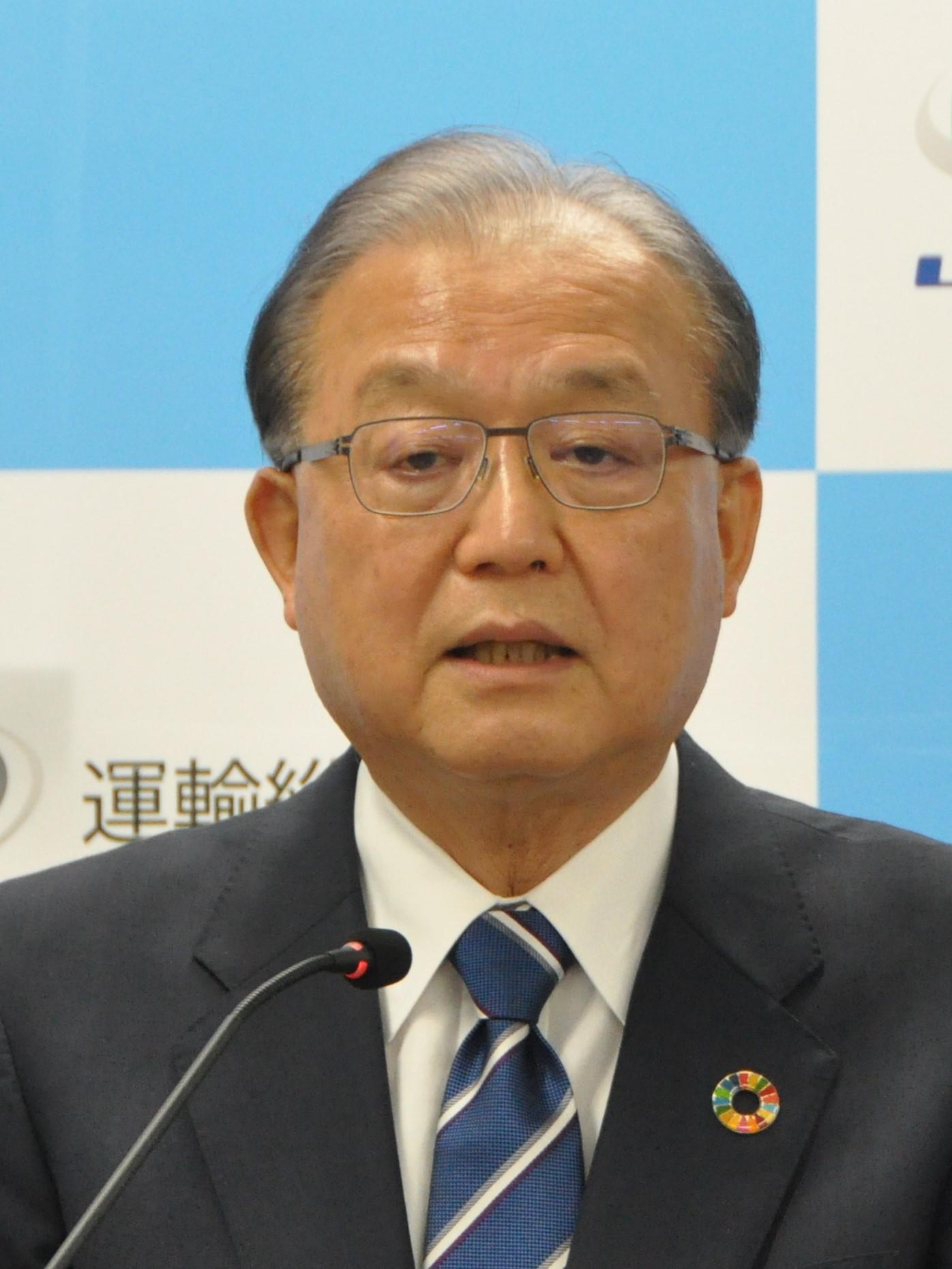
SHUKURI Masafumi |
|---|---|
| Lecturer |
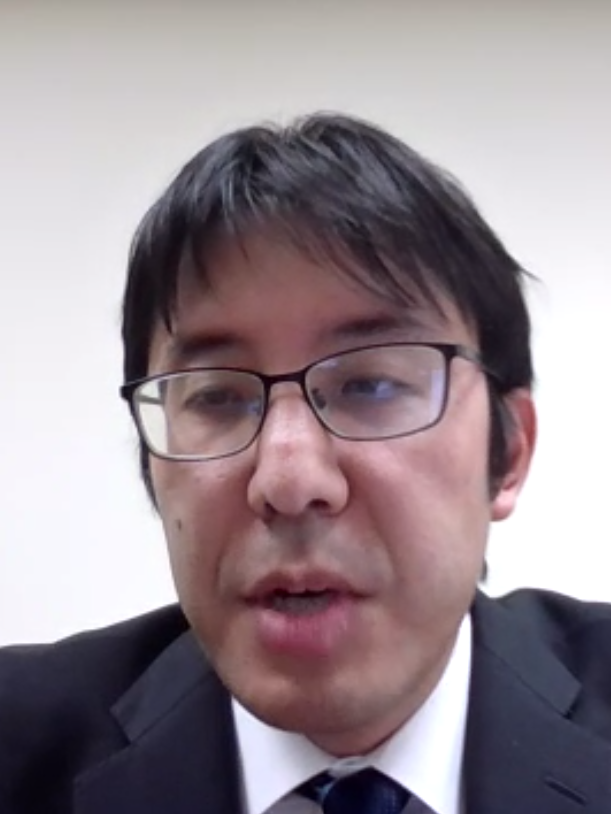
FUJIMAKI Yoshihiro |
| commentator |
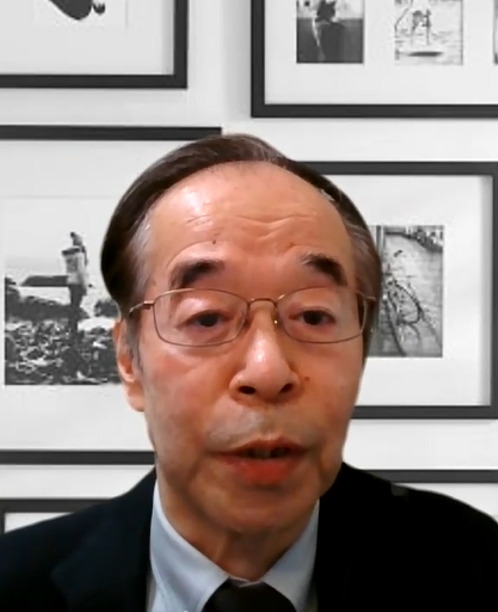
SUZUKI Shinji |
| Q&A session |
<Coordinator>
YAMAUCHI Hirotaka President for Research, (JTTRI) 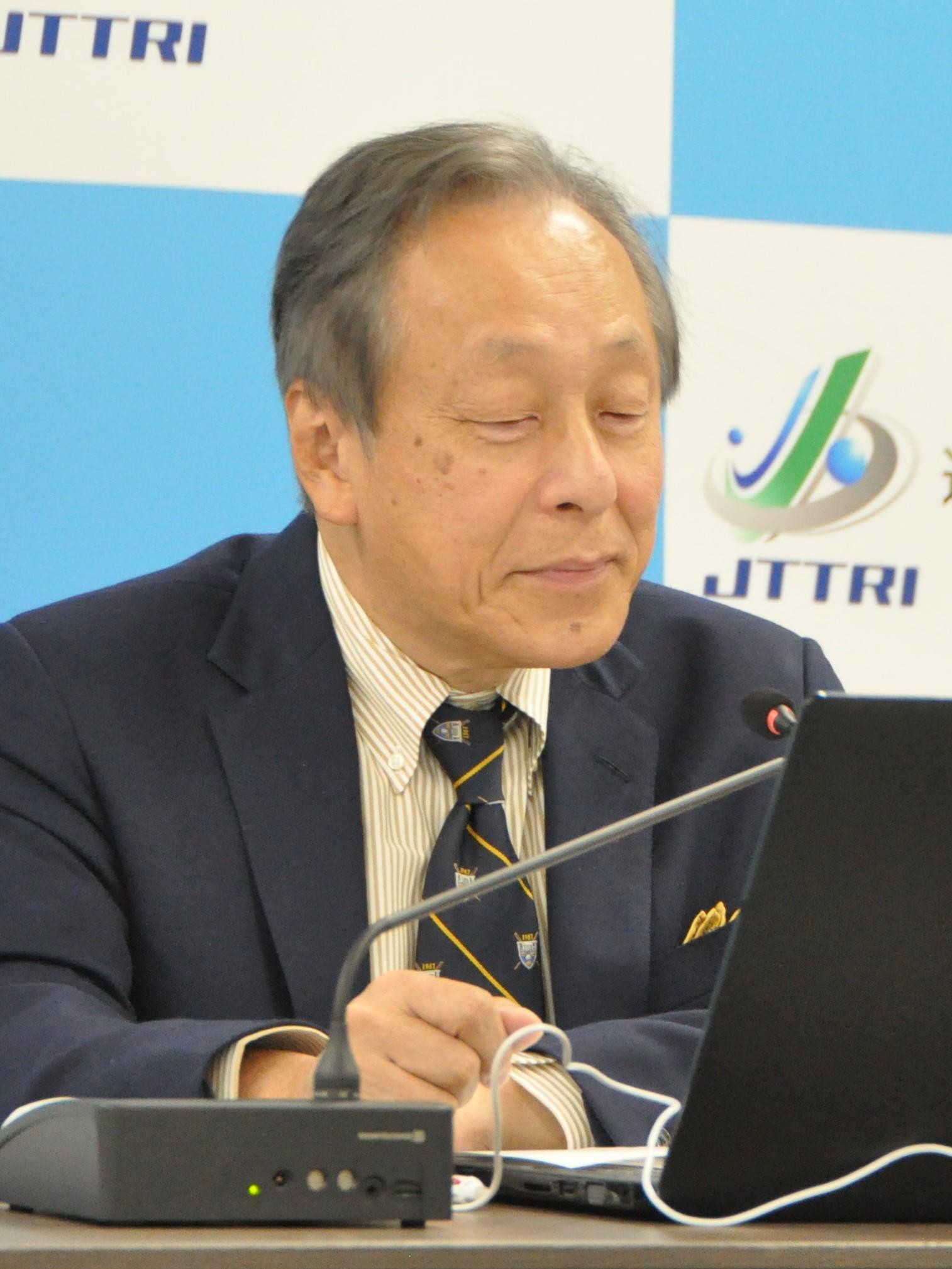
|
| Closing Remarks |
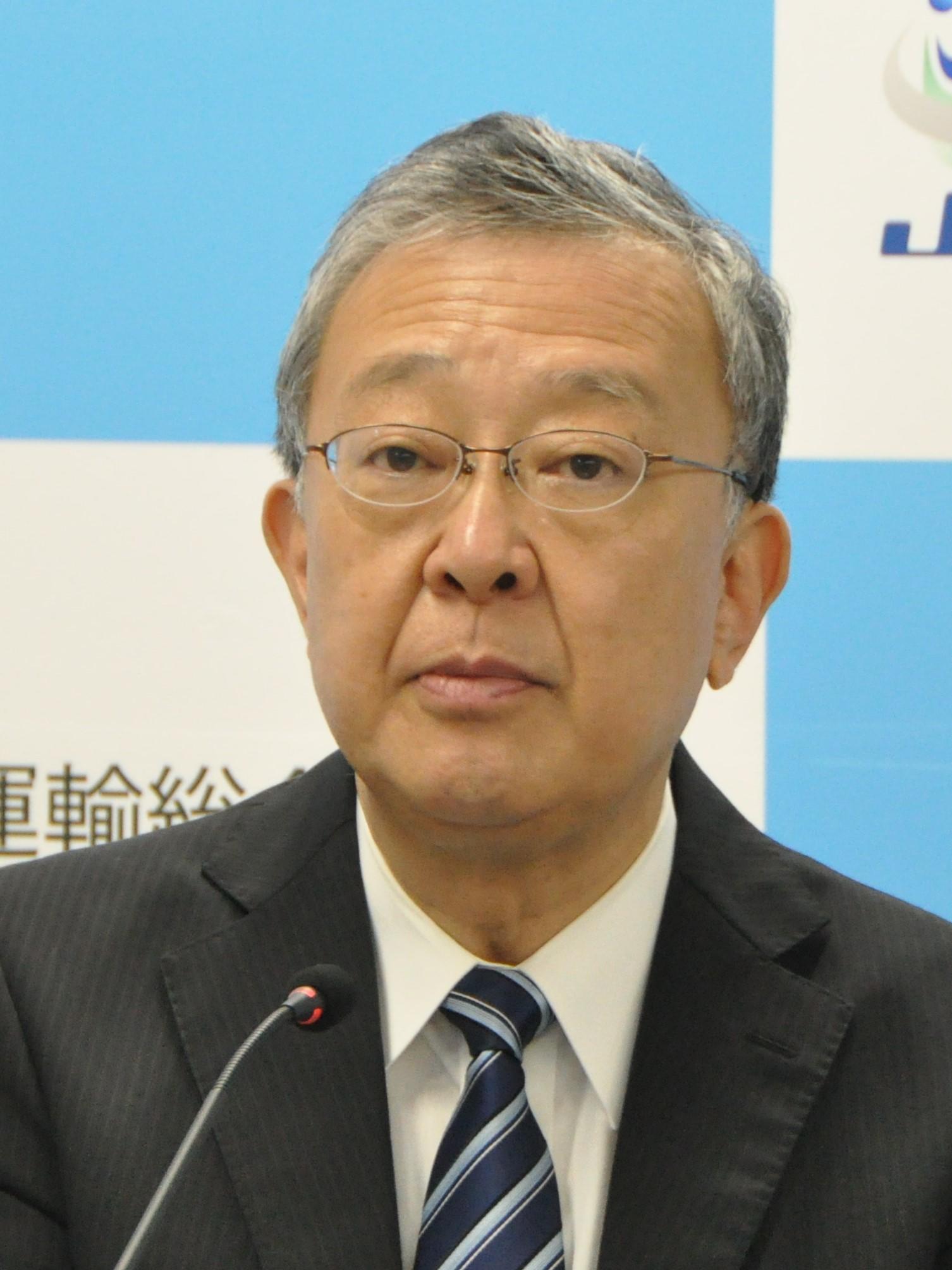
OKUDA Tetsuya |
Outline of the seminar
Results of the day:Yoshihiro Fujimaki, Senior Research Fellow at the Japan International Transport and Tourism Institute, USA, gave a presentation on “The Latest Trends in the Unmanned Aircraft Systems (UAS) Policy in the United States, Edition 2022: - Initiatives to ensure safety in beyond visual line-of-sight operations and to share airspace with traditional aircrafts -” The key points of the presentation were as follows.
• Currently, the majority of UAS are VLOS due to strict regulations on BVLOS operations. On the other hand, in the future, as regulations are relaxed, BVLOS operations will become more common, and the synergistic effect of increasing the number of aircraft and expanding the range of their flights will greatly increase the importance and risk of UAS in airspace.
• Of the waivers from regulations governing the operation of UAS in the U.S., there have been approximately 4,000 applications for BVLOS operations, but only a small number have been approved. In June of last year, the Federal Aviation Administration (FAA) established an Aviation Rulemaking Committee of experts to create general rules that do not rely on these waivers from regulations. The Aviation Rulemaking Committee examined the following items and released its report in March of this year.
(1) New qualifications are to be established for pilot certification, requiring knowledge of automated flight control systems and multi-aircraft operations. Meanwhile, Japan requires knowledge of automated flight control systems in pilot certification, but does not include knowledge of multi-aircraft operations.
(2) In terms of the level of acceptable risk, general aviation is to be set as a comparison for BVLOS operations of UAS. In Japan, however, the target for comparison has not been made clear.
(3) Regarding the framework for risk-based certification of aircraft, the level of involvement of the authorities is to be determined from among direct inspection and certification, partial confirmation, or no involvement, depending on the risk. In Japan, the only system available is inspection and certification by the authorities or an approved inspection organization.
(4) For the simultaneous operation of multiple aircraft by a single pilot, the ratio of the number of pilots to the number of aircraft is to be capped according to the level of automation involved. On the other hand, in Japan, the number of aircraft per pilot is determined on a case-by-case basis during the assessment of the operational control method for each flight.
(5) A system for licensing operators of UAS is to be established and the development of a system for the supervision of flight operations will be required. Such systems are yet to be introduced in Japan.
• In response to the sharing of airspace with manned aircraft as a result of the expansion of BVLOS operations, the U.S. Aviation Rulemaking Committee discussed (1) services related to strategic and technical separation by third parties and (2) collision avoidance.
(1) With respect to services related to strategic and technical separation by third parties, a certification system for such services is to be established, and in Europe, the establishment of a certification system and the mandatory use of such services in designated airspace will take effect in January of next year. Conversely, Japan is currently considering the establishment of a certification system by around 2025.
(2) Meanwhile, collision avoidance based on ADS-B and other information shall be made mandatory. Japan and Europe, however, have no uniform mandate for collision avoidance.
・In order to respond to the development of automated flight control systems that the expansion of BVLOS operations will bring about, it is important to have a framework to guarantee safety as an organization, and it is necessary to establish a licensing system for operators of UAS and the scope of operation for which such a licensing system is required. Moreover, in order to accommodate "sharing airspace with manned aircraft," it is important to promote the use of services related to strategic and technical separation and to implement collision avoidance based on information on the position and speed of manned aircraft. It is also necessary to establish a certification system for service providers and to promote the installation of ADS-B in manned aircraft.
Then, the commentator, Project Professor Shinji Suzuki of the Institute for Future Initiatives at the University of Tokyo, provided an explanation and asked questions as follows.
[Explanation]
・Safety measures for next-generation air mobility, including drones, are based on the following three basic principles.
(1)Take measures based on the combination of a risk’s severity and frequency. Even with the same aircraft, the risk differs depending on the environment in which it flies, and safety measures must be taken in proportion to that risk. The European Aviation Safety Agency (EASA) has made progress in this risk-based approach, classifying UAS operations into three levels - Open, Specific, and Certified - and establishing requirements for each.
(2) Create a Concept of Operations (ConOps), including aircraft and their use cases, and conduct risk assessment corresponding to that concept. EASA has adopted SORA, a risk assessment method developed by JARUS, an organization in which national authorities participate that examines regulations for UAS. This SORA is being used for the Fukushima Robot Test Field as the basis for developing risk assessment guidelines that are compatible with the Japanese system.
(3) Use means of compliance developed by industry associations for performance-based standards. Under the conventional method, aviation authorities had to individually examine the compliance of new technology proposals from each company. Under the performance-based standards, however, standardization organizations will establish a common means of compliance for certifying new technology, in principle eliminating the need for individual examinations by aviation authorities. Japan is also studying means of compliance for UAS safety standards, etc., through a NEDO project.
・Future issues include the definition and certification of drone operators, international harmonization, operation management, and the establishment of regulations for large UAS.
In particular, with regard to the operation management, introduction of operation management in accordance with a roadmap will be promoted, and, through the NEDO project, technologies for the operation of multiple UAS by a single pilot and the sharing of airspace with manned aircraft will be developed.
[Questions]
(1) Which part on the U.S. Aviation Rulemaking Committee was not in full agreement?
(2) How long does it normally take for a report by the Aviation Rulemaking Committee to become a new rule?
(3) Why are there differences in rules between Europe and the U.S., and are there any movements being made toward international harmonization?
(4) What is the status of the rules for BVLOS operations in public use?
In response to these questions, Senior Research Fellow Fujimaki responded as follows.
(1) Items that were not fully agreed upon included the review of Right-of-Way rules and protection of privacy. “Review of Right-of-Way rules” means giving UAS the right-of-way when certain conditions are met, as opposed to the current rule where manned aircraft always have priority over UAS. On this point, there were suggestions that because some manned aircrafts are difficult to equip with relevant equipment or have poor maneuverability, UAS should continue to perform avoidance. Regarding the protection of privacy, in response to the industry’s voluntary initiative to promote and educate operators about best practices, some commented that disclosure of information regarding the purpose of operations and what kind of data is collected should be mandatory.
(2) In the case of Remote IDs, it took about three years from the report to it becoming an official rule. However, as there is strong need from the industry for regulations pertaining BVLOS operations, it is thought that progress on this will come more quickly than for Remote IDs.
(3) In general, the U.S. has an approach aimed at resolving specific needs, whereas Europe has an approach focused on gradually introducing the necessary elements for the ideal future system. Although it is difficult to completely unify the regulatory framework because the needs and environments related to UAS differ from country to country, efforts are underway to allow Europe to use means of compliance based on U.S. standards for those aspects shared by each country, such as certification of aircrafts and systems, and to develop standards that can accommodate both U.S. and European standards by standardization bodies.
(4) Currently, BVLOS operations of UAS by public institutions in the U.S. can be conducted either under a waiver in accordance with the same regulatory framework as commercial flights or under a special permit as a public operator. In either case, there is a special process in place to deal with situations where a public institution must urgently conduct a flight that exceeds the scope of the permit.
Finally, questions were provided from the audience, and further discussion was held on the sharing of airspace between UAS and helicopters, the expected timing of public comments on rules for BVLOS operations, incentives for equipping manned aircraft with ADS-B, and specific ways to prevent collisions between UAS and manned aircraft.


